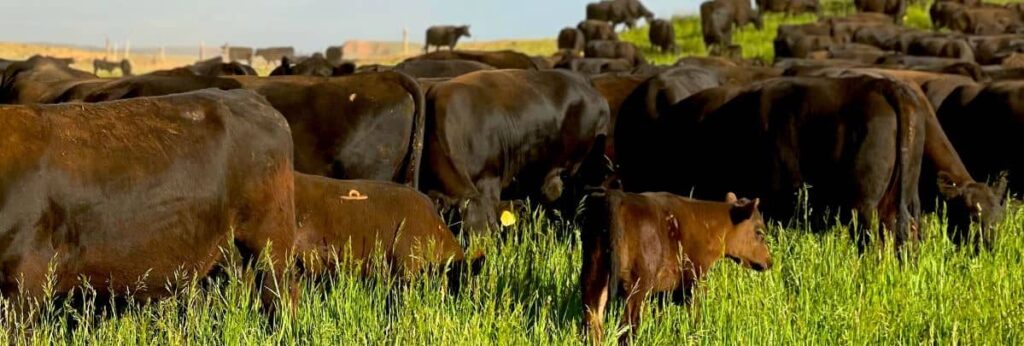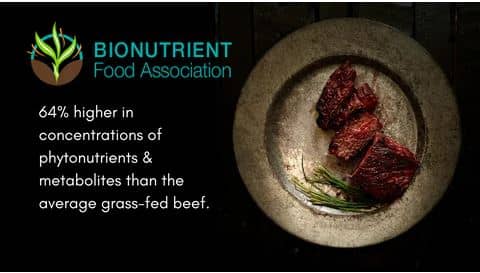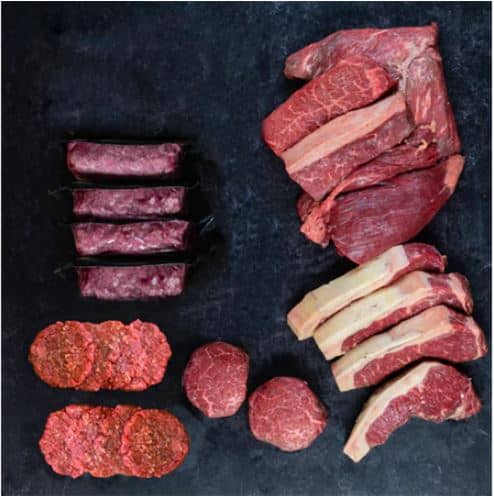
The future of steak is embracing Regenerative Agriculture for superior flavor and nutrition. When cattle graze like bison did, it restores ecosystems and produces more nutrient-dense beef, bursting with flavor.
This cutting-edge approach, which is our latest find for T99M, is still quite rare in the marketplace. In this article, we will explore the regenerative agriculture movement, its principles and how it’s changing how we see steak.
From Pasture To Your Plate
The juicy steak sizzling on your plate comes from somewhere, but few consumers think much about the journey from pasture to plate. Yet this journey has changed dramatically in recent decades, with profound implications for human and environmental health. Modern agricultural practices have depleted soils and reduced the nutrient density of beef. But a movement back towards regenerative organic agriculture is producing a new kind of steak, superior in flavor and nutrition.
Order the best beef you’ve ever experienced here!
The Regenerative Agriculture Movement
Leading this movement are ranchers like those behind this company, who, based on the principles of regenerative agriculture, allow their cattle to graze on native grasses and plants. This new approach restores grasslands, enhances biodiversity, and stores carbon in the soil. But the benefits don’t end there. As the cattle graze native plants and grasses, they develop gut microbiomes suited to the surrounding ecosystem. This diverse microbial community allows the cattle to derive more nutrients from the plants. Key nutrients like omega-3s, amino acids and anti-aging compounds become concentrated in the meat.
A Steak You Won’t Believe
The result is a steak bursting with flavor and dense with nutrients lacking in conventional grain-finished beef. Early lab tests in 2023 on CC Meats product showed 60-80% more phytonutrients compared to average grass-fed beef. As the scientific understand more about these compounds, regeneratively raised beef may turn out to be a powerhouse of anti-inflammatory and anti-aging benefits.
Learning From The Past
To understand the significance of this, we must go back in time. Millions of bison once inhabited the Great Plains, grazing intensely but moving on before over-grazing. When these great herds were killed off in the 1800s, huge grasslands were left with no large grazers. Cattle soon replaced bison, but without matching their movement patterns. This started a cycle of over-grazing that gradually damaged grasslands.
The solution is to replicate natural grazing habits. When cattle briefly but intensively graze an area before moving on, this helps plants regrow and supports biodiversity. Their manure nourishes the soil. Grazing optimizes photosynthesis while their hooves aerate the ground. This natural partnership between grazing animals and grasslands evolved over millions of years.
The Proof Is In The Beef
At ranches like the one we’re exploring, cattle rotate through large ranges, rounded up with portable electric fences. They graze native plants in a way that renews worn-out land. This regenerative method requires close attention to the health of soils, plants, animals and microbes.
Order the best beef you’ve ever experienced here!
For humans eating this beef, the benefits come full circle. When cattle graze diverse native plants, they take in a wide array of phytonutrients. Some contribute vibrant colors, while others combat inflammation or act as potent antioxidants, by reducing inflammation or act as antioxidants, anticancer or anti-aging agents. Complex phytochemicals enhance the nutrient makeup. This far exceeds feedlot beef quickly fattened on grain or corn.
Regenerative agriculture can improve the nutritional quality of food. Studies have shown that food grown on regenerative farms is higher in vitamins, minerals, and antioxidants than food grown on conventional farms. (Source: Rodale Institute)
Early tests underscored the dramatic differences. CC Meats’ regeneratively raised grass-fed beef showed 60-80% higher phytonutrients than average. Levels of healthy fats like omega-3s were several times higher. Tracking the health impacts will take time, but initial signs are promising. Customers report improved health markers and love the tasty flavor.
Pioneering A New Frontier
Most ranches fall along a spectrum from conventional to regenerative farming. Though still uncommon, the latter produces measurably better beef while renewing ecosystems. This model aligns ethics and quality, backed by science. While small-scale now, growing these proven regenerative practices could reshape the beef industry and create some regenerative agriculture jobs.
Consumers who value both flavor and the environment are rallying behind ranchers who practice regenerative agriculture in this age of conscious consumption. They are working together to create a brighter future for steak—one that respects tradition, honors nature, and nurtures our bodies.
In Conclusion,
I promised you some cutting-edge information, and this one is a great one that was brought to our community. A shift in our eating habits that is underway with regenerative agriculture.
The future of steak extends far beyond the cut on your plate. It tells a story involving sustainability, flavor, and nutrition. The steak on your plate symbolizes the delicate balance of humans, animals, and the land. The steak of the future has arrived, and it looks fantastic. Try some today and taste for yourself.
Statistics About Regenerative Agriculture
- Regenerative agriculture can sequester up to 1 ton of carbon per acre per year. This could help to offset up to 10% of global greenhouse gas emissions. (Source: Rodale Institute)
- Regenerative agriculture can help to reduce soil erosion by up to 90%. This is because regenerative practices, such as cover cropping and no-till farming, help to protect the soil from wind and rain. (Source: USDA)
- Regenerative agriculture can increase water infiltration by up to 30%. This helps to improve water quality and reduce flooding. (Source: NRDC)
- Regenerative agriculture can increase crop yields by up to 20%. This is because regenerative practices help to improve soil health and fertility. (Source: FAO)
- Regenerative agriculture can improve the nutritional quality of food. Studies have shown that food grown on regenerative farms is higher in vitamins, minerals, and antioxidants than food grown on conventional farms. (Source: Rodale Institute)
Other Notable Statistics
- The global regenerative agriculture market is expected to reach $1.2 trillion by 2028. (Source: Allied Market Research)
- Over 100 million acres of farmland are now being managed using regenerative practices. (Source: Regeneration International)
- Over 1,000 major food companies have committed to sourcing regenerative agriculture products. (Source: Sustainable Agriculture Research & Education)


